廓尔喀士兵 – AITIHASIK (Gorkhali Sainik)
¥ 4,500.00
| 默认规格(1英寸=2.54厘米) | |
| 刀片尺寸:13英寸 | 手柄尺寸:4.5英寸 |
| 刀片材质:高碳钢5160 | 手柄材质:木质 |
| 刀片工艺:未抛光 | 手柄工艺:抛光 |
| 刀刃锐度:开刃 | 刀刃硬度:55-57 hrc |
| 刀片厚度:8毫米 | 刀鞘材质:牛皮 |
| 附随刀具:无 | 刀身重量:625克 |
| 总体重量:835克 | 发布日期:未知 |
| 原产地:尼泊尔 | 发货地:尼泊尔加德满都 |
The replicated version in style, shape and size of the original kukri that was issued to the “Gorkhali Army” in the 18th century..
这是 18 世纪廓尔喀军队使用的廓尔喀军刀的复制品,在风格、形状和尺寸上都与原版相同。
AITIHASIK (Gorkhali Sainik) khukuri; the 1st Nepali knife ever documented.. the knife British really feared
廓尔喀军刀 (廓尔喀士兵); 这是第一柄有记载的尼泊尔刀。英国人真正害怕的刀。
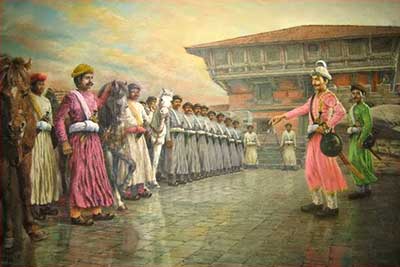
“Aitihasik” meaning ‘historic’ or ‘antique’ is the legend of all khukuris that has a proud historic significance in Nepal. It is actually the replicated version in style, shape and size of the original kukri that was issued to the “Gorkhali Army” in the 18th century. The Gorkhali Paltan (Army) orfamously known as the “Gorkhas” is the first recognized and documented Arm Force of Nepal that was started by King Prithivi Narayan Shah from Gorkha who went to war with a mission to unite all scattered kingdoms into one. The strong military force armed with khukuris, spears, swords and few pump guns conquered all kingdoms and united them into one kingdom, one nation in 1768 AD, which later became Nepal. The Gorkhali Army not only united Nepal but also prevented the British from invading the country who had already taken over India then. Its history dates back to late18th century when Gorkhali Sainik led by the king and many of his successful army generals initiated the national campaign of expanding its boarders far and further. Soldiers in the battle carried the khukuri for both reasons, as a main weapon and as a back up weapon in their armory. The famous battle of “Nalapani” in Deheradun of India, commanded by the great general Balbhadra Kunwor from the Gorkha’s side, witnessed the Aitihasik khukuri in full action, swinging and slaughtering the British, proving it as a lethal and decisive weapon in the hand of a Gorkha (Gorkhali Sainik / soldier).
“历史”或“古董”的意思是廓尔喀弯刀的传奇,它在尼泊尔具有自豪的历史意义。它实际上是 18 世纪发给“廓尔喀军队”的原始廓尔喀弯刀在样式、形状和尺寸上的复制版本。廓尔喀帕尔坦 (军队) 或著名的“廓尔喀人”是尼泊尔第一个得到认可和记录的武装部队,由来自廓尔喀的国王普里特维·纳拉扬·沙阿创立,他率军出征,旨在将所有分散的王国统一起来。这支强大的军事力量配备廓尔喀弯刀、长矛、剑和几支泵式枪,征服了所有王国,并将它们统一为一个王国,一个国家,即公元 1768 年的尼泊尔。 廓尔喀军队不仅统一了尼泊尔,还阻止了已经占领印度的英国入侵该国。廓尔喀军队的历史可以追溯到 18 世纪后期,当时廓尔喀士兵在国王及其许多成功将军的领导下发起了将边界扩展到更远的地区的民族运动。战斗中的士兵出于两个原因都携带了廓尔喀弯刀——一个是作为主要的武器,另一个是作为盔甲中的备用武器。在印度德赫拉敦的纳拉帕尼著名战役中,来自廓尔喀一方的伟大将军巴尔巴德拉·昆沃尔亲眼目睹了廓尔喀弯刀在战斗中的全部作用,它挥舞着屠杀了英国人,证明它是廓尔喀人手中的致命武器和决定性武器。
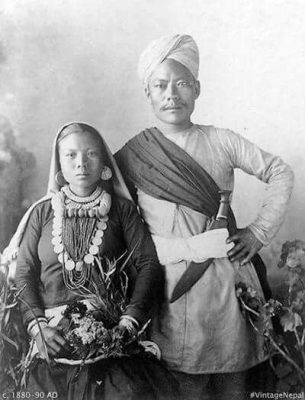
This AITIHASIK (Gorkhali Sainik) is original gorkhali khukuri that was heavily used in the history of Nepal by the real Gurkhali Army. This gurkha khukuri resembles the histroy and glory of Nepal; many wars that the brave gorkha people fought for the unification of Nepal and beyond. This kukri knife is also known by multiple names such as gurka knife, ghurka knife, gurkhas knife, gorkha khukuri that was used as military gurkha kukris. With this fact we can proudly say that its the authentic Nepali kukri used by the Gorkhali Sena in many Gorkha wars fought by the house of Gorkha against the British East India Company and other small kingdoms. This khukuri played such a vital and successive role in world history that at later stage Gorkhas and Kukris were forever inter-linked to one another as synonyms; the flesh and blood sort of relation.
这种 AITIHASIK (廓尔喀士兵) 是真正的廓尔喀军队在尼泊尔历史上使用过的原始廓尔喀弯刀。这把廓尔喀弯刀代表着尼泊尔的历史和荣耀;勇敢的廓尔喀人民为尼泊尔统一而战的许多战争,以及其他战争。这把 kukri 刀也被称为廓尔喀刀、gurkha 刀、gorkhas 刀、廓尔喀 khukuri,这些刀被用作军用廓尔喀 kukris。我们可以自豪地说,这是廓尔喀塞纳在廓尔喀家族与英国东印度公司和其他小王国之间进行的许多廓尔喀战争中使用过的真正的尼泊尔弯刀。 这把廓尔喀军刀在世界历史中发挥了如此重要的连续作用,以至于廓尔喀人和廓尔喀军刀后来永远地作为一个同义词联系在一起,就像血肉关系一样。
The glory of Gorkha, Gorkhas and Khukuri started from this era…
廓尔喀人、廓尔喀兵和军刀的荣耀始于这个时代…..
Khukuri House (KHHI) and the AITIHASIK (Gorkhali Sainik) Kukri
廓尔喀之家 (KHHI) 和 廓尔喀廓尔喀历史廓尔喀 (廓尔喀士兵) 弯刀
KHHI has always been on the top notch in making the original Nepali Kukri. We have given our best to keep its originality both in design and quality. This historic kukri was made to show the importance and glory of kukri. Few things you need to know about this gorkhali kukri from Nepal.
廓尔喀弯刀一直是制作原始尼泊尔廓尔喀弯刀的佼佼者。我们在保持其原始设计和质量方面付出了最大的努力。这款历史悠久的廓尔喀弯刀是为了展示廓尔喀弯刀的重要性。您需要了解的关于尼泊尔廓尔喀弯刀的一些事情。
- The khukuri has unpolished blade to resemble the originals
廓尔喀弯刀保留着原始的粗糙刀片 - The khukuri has two straight fullers to resemble the originals
廓尔喀弯刀有两道笔直的血槽,形状与原版相似。 ## - The shape of the blade is forged wider towards the head/upper portion, done for better swing and force
刀片的形状向头部/上部加宽锻造,以获得更好的挥舞力和力量 - The wooden handle is slightly curved towards the end for easier and better grip
木质手柄末端略微弯曲,以便更舒适、更容易地握持。 - The scabbard is made from special buffalo hide with embossing and patterns overlaid
刀鞘由特殊的水牛皮制成,上面有浮雕和图案 - Tip or Kothi is discarded in the scabbard, unlike the regular ones. This absence gives the feeling of originality and a look of very traditional khukuri.
刀尖或鞘尖被丢弃在刀鞘中,这与普通刀鞘不同。这种缺失给人以原始的感觉,并具有非常传统的廓尔喀弯刀的外观。 - Also designed as a solid jungle utility knife like a machete
也被设计成像砍刀一样坚固的丛林实用工具刀
Size of Blade: 13 inches approx.
刀片尺寸:约 13 英寸
Materials / Features: Special treated buffalo leather scabbard, Rosewood handle
经过特殊处理的黄牛皮刀鞘,红木手柄
The Warrior Tribes; are the men who mainly joined the Gorkhali force and laid the foundation of the Gorkha raj…
廓尔喀部落是加入廓尔喀军队并建立廓尔喀王国基础的主要由男性组成的群体。
Rai, Limbu, Sunuwars, Magar and Gurung are called the warrior tribes of the Gurkha clan. They are the direct and indirect decedents of the Kirati caste that entered Nepal in around 12th BCE from South-East plains of China and ruled Nepal from 8th BCE to 3rd CE after toppling the Maheshpal dynasty. King Yalamber was the 1st king of Kirat dynasty. These people are mainly short in stature, have small physique and Chinese-like features and live mainly in the hills and mountains. They worship nature, their ancestors and most follow Shivaism. The difficult terrains, very hard life and the inborn survival instinct make them very tough soldiers. Kiratis have always been the backbone of army of any dynasty that came to power in Nepal.
廓尔喀氏族的战士部落包括拉伊族、林布族、苏努瓦尔族、马加尔族和古朗族。他们是廓尔喀王朝的直接或间接后裔,该王朝源于公元前 12 世纪左右从中国东南部平原迁徙到尼泊尔的基拉特种姓。在推翻摩诃婆罗王朝后,基拉特人于公元前 8 世纪至公元 3 世纪统治尼泊尔。雅兰贝里国王是基拉特王朝的第一位国王。这些人身材矮小,体格纤细,面部特征类似中国人,主要生活在山区。他们崇拜自然、祖先,大多数人信奉湿婆派。崎岖的地形、艰苦的生活和与生俱来的求生本能使他们成为非常强悍的士兵。廓尔喀人一直是尼泊尔历代王朝军队的骨干。
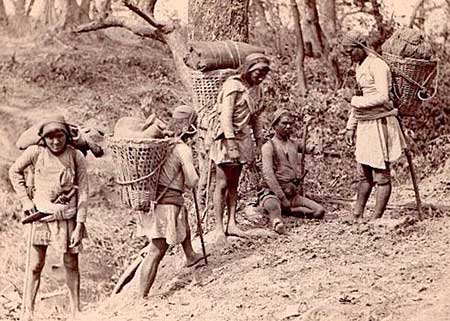
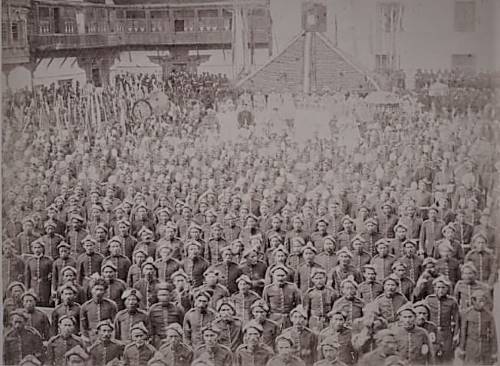
只有已购买此产品的登录客户才能发表评价。
相关产品
尼泊尔军刀
尼泊尔军刀


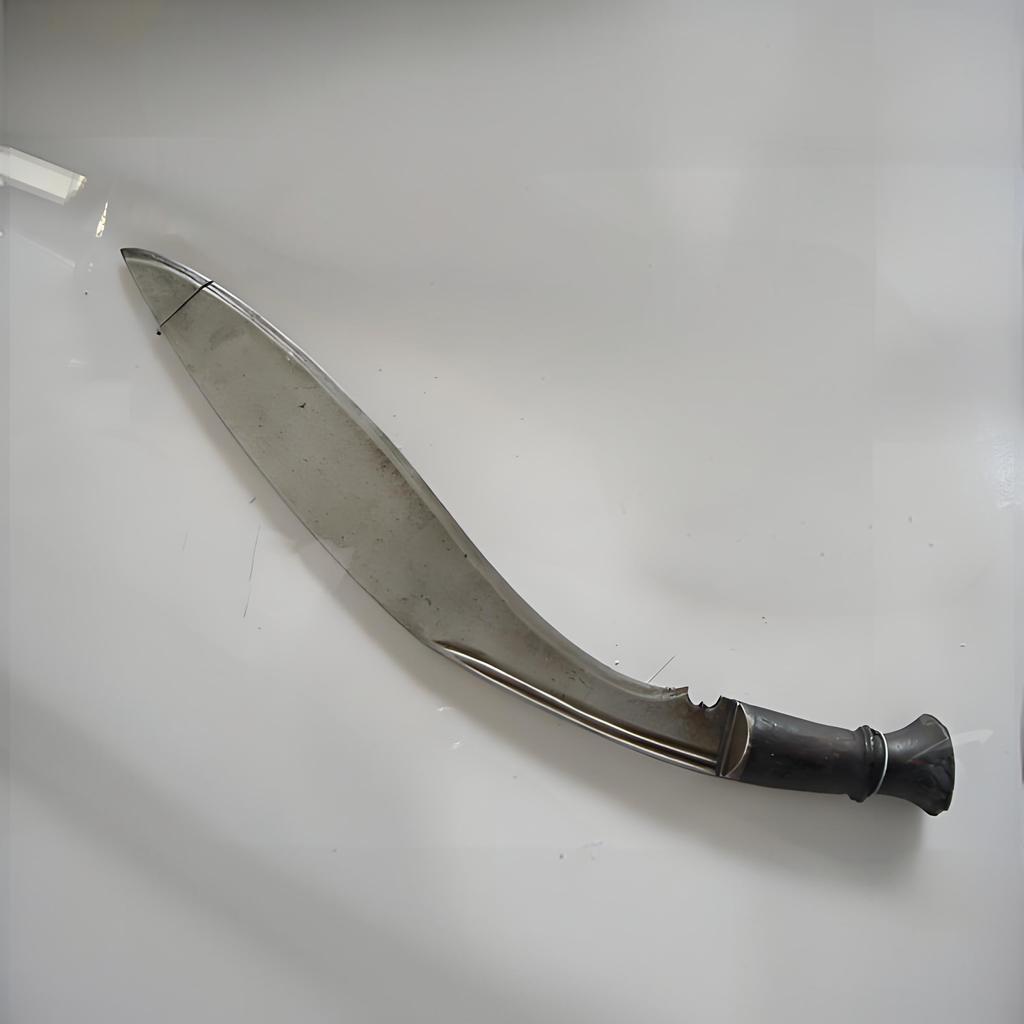
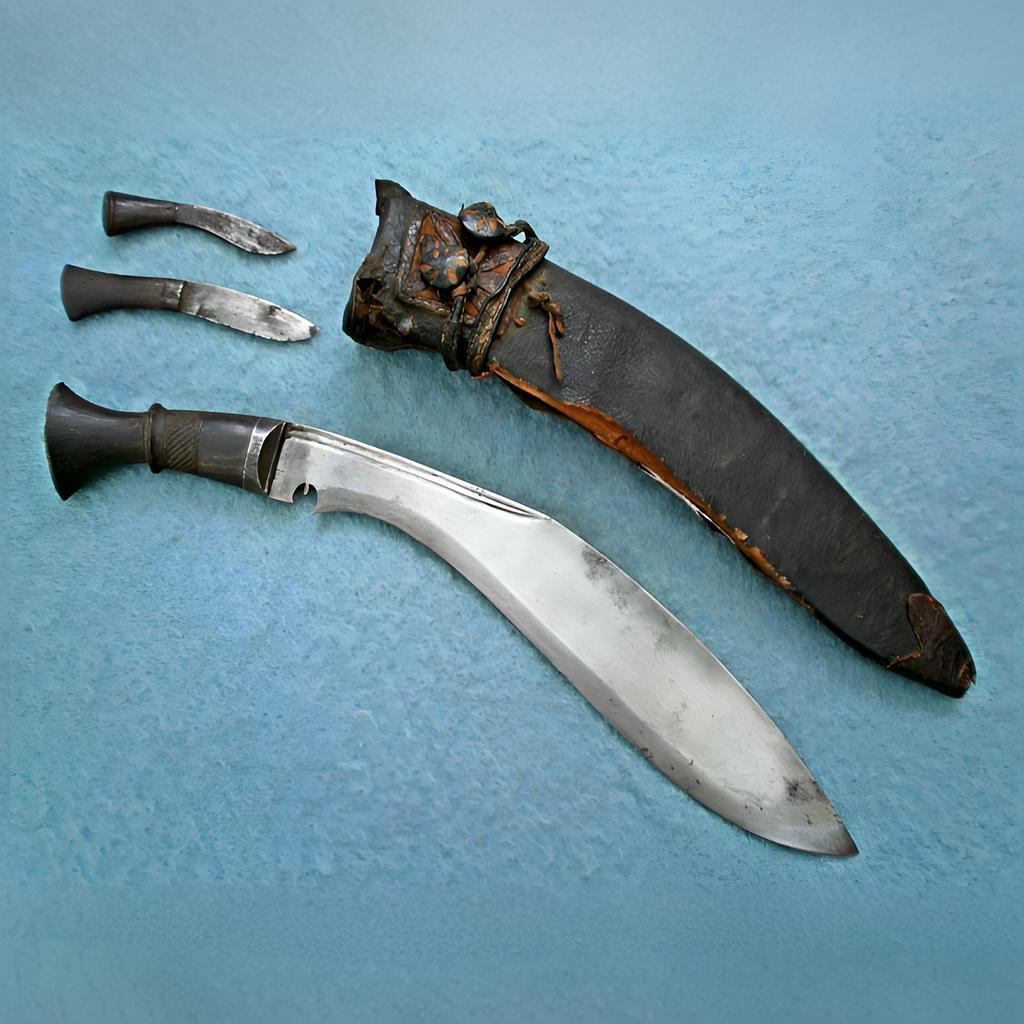

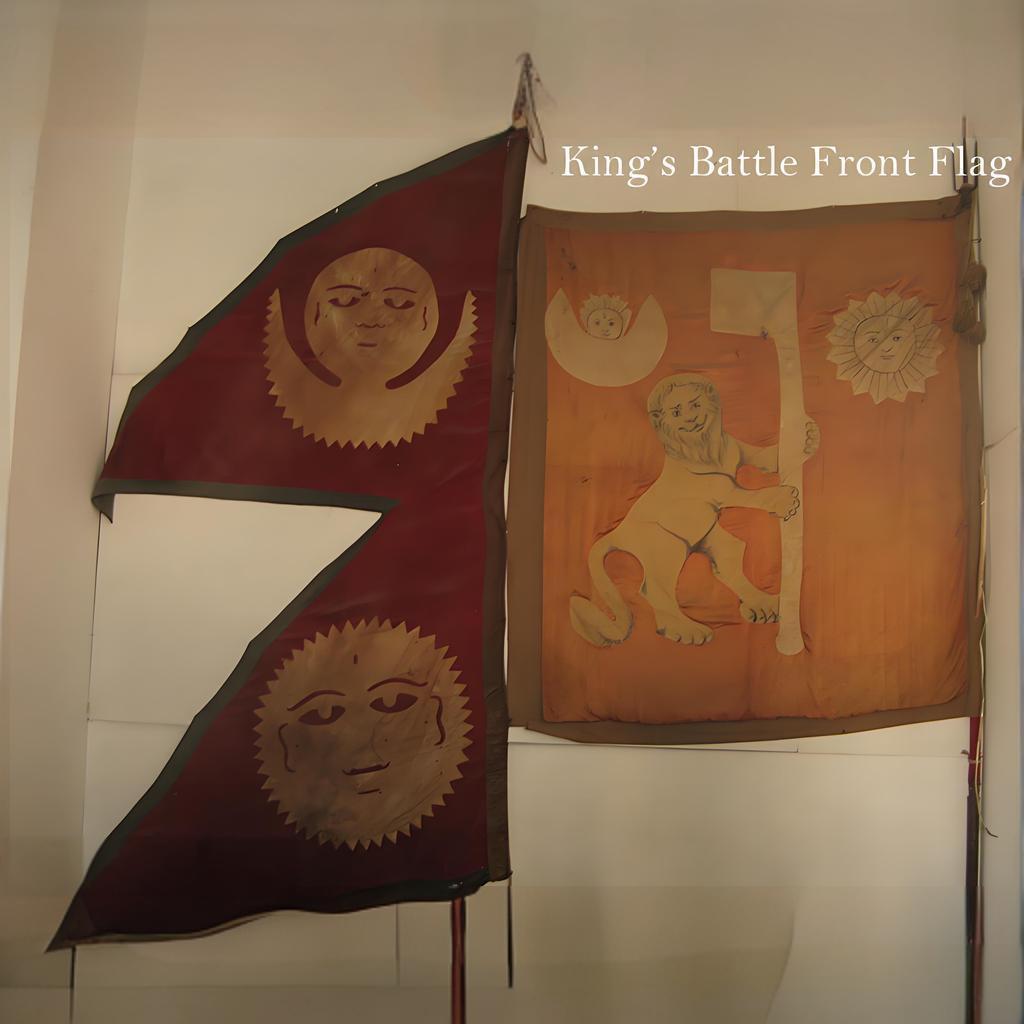
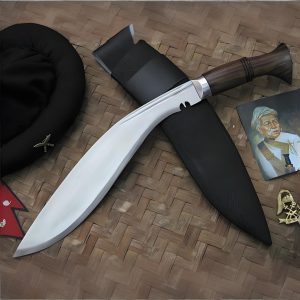
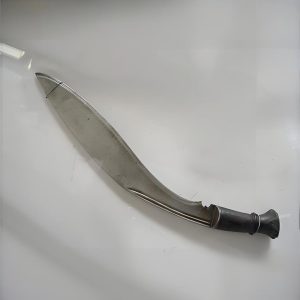

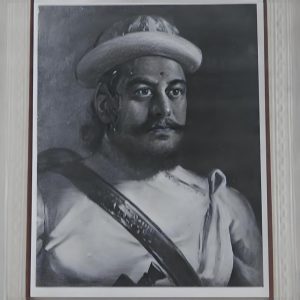

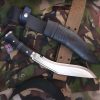
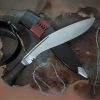
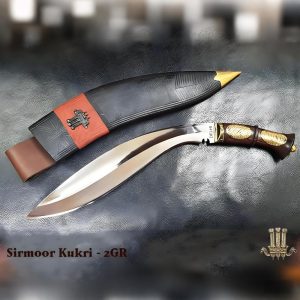





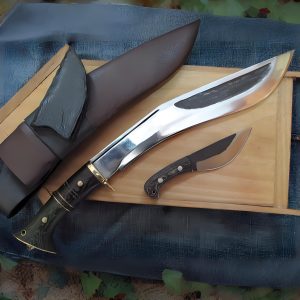
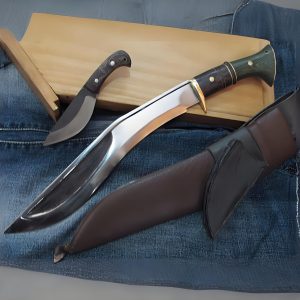
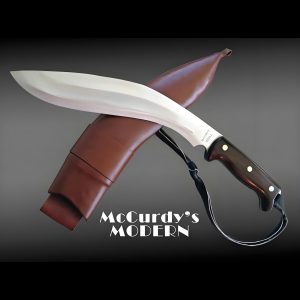
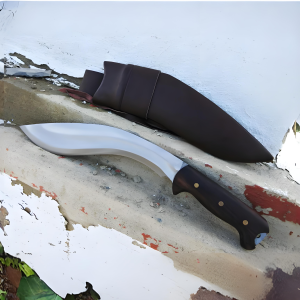
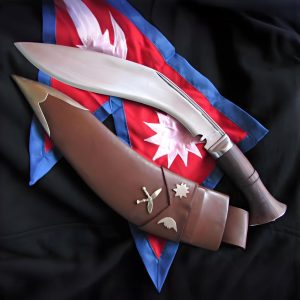
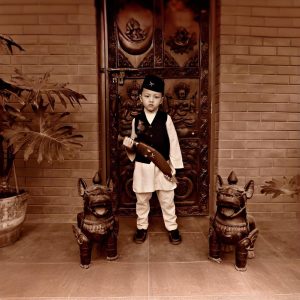
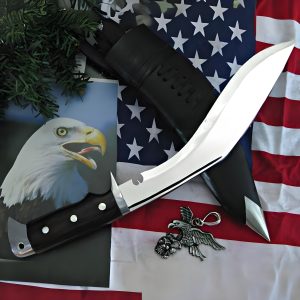

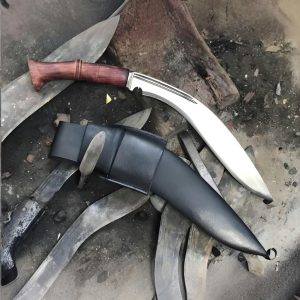
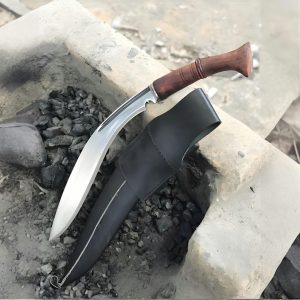
评价
目前还没有评价